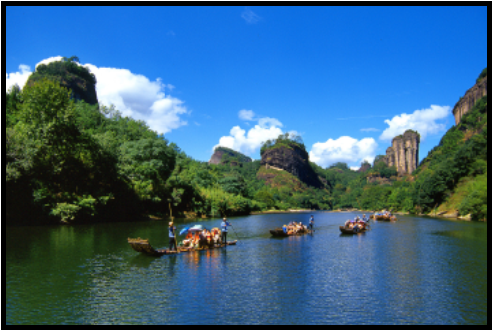China! A vast land of long history, ancient cultures, and diverse landscapes. In the last 20 plus years, largely through my work involving the NZ China Friendship Society, I have enjoyed spending up to 5 months per year in China, and have now designed and led at least one tour to China every year since 2008.
When I have spare time in China, I enjoy exploring far and wide the natural and wilderness areas. It was my love for these natural scenic wonders that led me to take a ‘Walking and Culture” tour to some of the best of these sites. Designed to be delivered in an efficient travel package, with easy connections from region to region on bullet trains, and access to the mountains by coach, three weeks of travel opened these to a group of 14 Kiwi walkers.
Ten came from Whangarei walking groups and members of the Whangarei Tramping Club, and were joined by four from other areas of the country. We travelled together for 20 days in a close group. Most were in the age range 60 to 72.
The three main mountains were Wuyi Shan (Shan is mountain in Chinese) in Fujian Province in the southeast where we started the tour, Huang Shan in Anhui Province, through to Hua Shan in Shaanxi Province in the central north. They are spectacular steep rock ancient extrusions from the earth, sometimes rounded, sometimes jagged. Their beauty has been captured for centuries in traditional landscape paintings, and revered by Buddhists with temples built on impossible outcrops. The paths are now maintained for people like us, who want to tread these paths and marvel at each corner as new vistas emerge.
Then there was Red Rock Gorge at Yuntai Shan, Henan Province, with the small river having eroded deep into the 1.4 billion year old rock. A magical walk between sheer walls, with waterfalls tumbling down the hewn out rock around every bend.
This is just a sample of some of the walks we did. The local people have established their lives around these scenic splendours, so where better to visit some of the most picturesque villages? On the route, there was also the ancient city of Kaifeng, which has the impressive history of serving as a capital in seven different dynasties. Today, it is the Song dynasty that is best preserved in the architecture and parks. Longmen is a site of Buddhist grottoes dating from 386 AD and visited in a two kilometre walk alongside the Yi River near another ancient capital, Luoyang. The very famous Terracotta Warriors were an essential stop-off on the way to the ancient Tang capital of Xi’an. Then back to the modern marvel of Shanghai for a couple of nights before departure.
The tour was manageable by anybody with a passion for exploring by foot, with a young heart to enjoy new experiences. The food experiences cannot be overlooked. Each location we passed through had its own regional speciality, which we sought out with the help of our delightful and efficient Chinese guide Sylvia.



